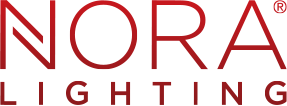Author: izzyalf
What is Comfort Dim?
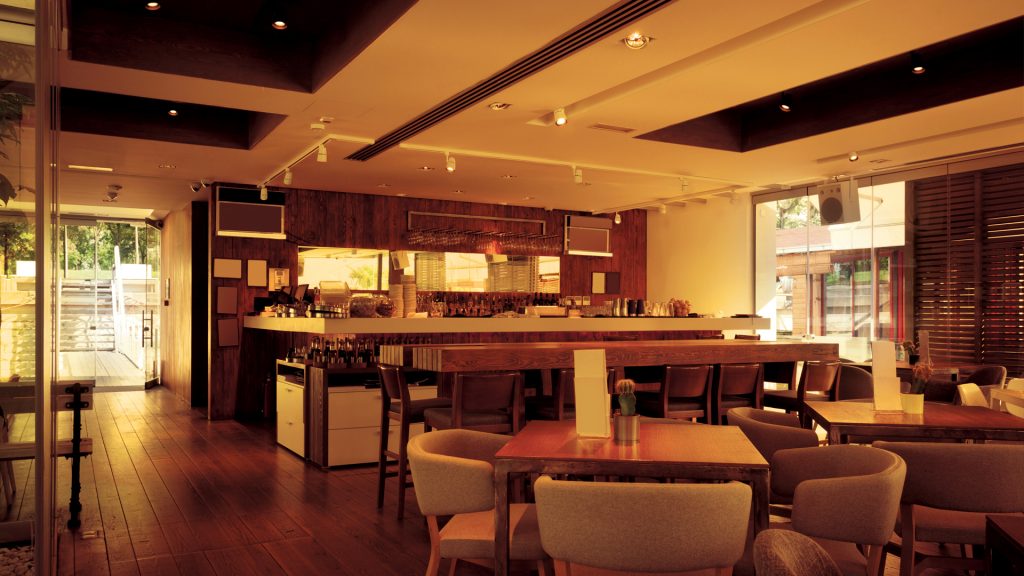
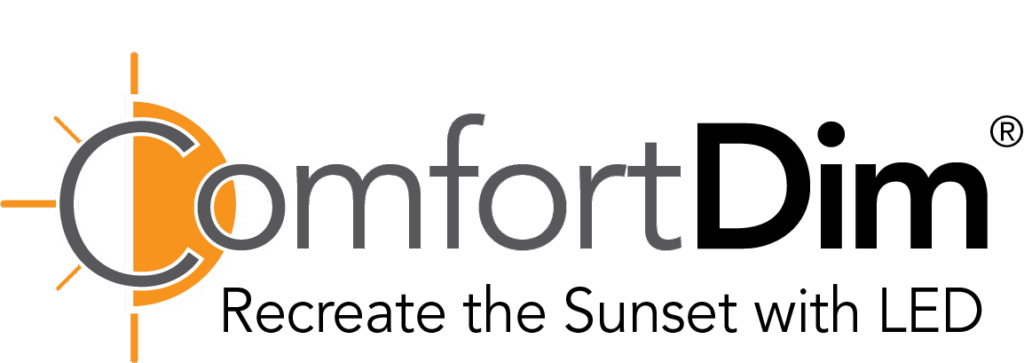
Comfort Dim is a warm, rich light dimming that creates an intimate atmosphere. An innovation in energy-efficient dimming, Comfort Dim, presented by Nora, warms the light as power is reduced. Comfort Dim color tones the temperature from bright to a warm, romantic incandescent feel. The warm, dim Comfort Dim is the perfect solution for restaurants, cineplexes, home theaters, multi-purpose event venues, and other applications where the temperature and comfort of the light sets the mood. Watch our Video!
Comfort Dim LED technology is available with these product lines:
Recessed Lighting:
Apollo Downlights 1000-2000lm (3000K to 2000K)
Cobalt Click Retrofit 900lm (3000K to 2000K)
Cobalt High Lumen Dedicated 1500-2000lm (3000K to 2000K)
Iolite Can-less 875lm (3100K to 2000K)
Iolite Dedicated 800lm (3100K to 2000K)
Iolite Dedicated 1500-2500lm (3000K to 2000K)
Pearl Retrofit 800lm (3100K to 2000K)
Multiple Recessed Lighting:
Iolite Mutiples 800lm per head (3100K to 2000K)
Cylinders:
Cobalt 900lm(3000K to 2000K)
iLENE 725-1800lm (3100K to 2000K)
Tape Light:
NUTP12 170lm/ft. (3000K to 1800K)
Track Lighting:
MAC XL 1000lm / 15W (2900K to 1800K)
MAY 650lm / 10W (2900K to 1800K)
Apollo FAQ
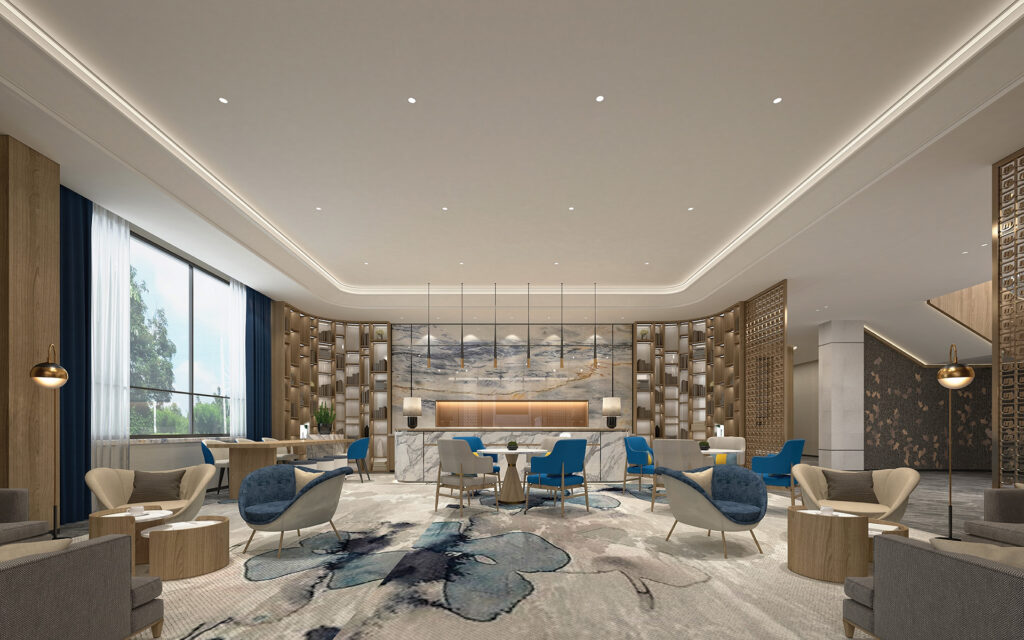
We have made a dedicated Frequently Asked Questions page for the Apollo Series
What are Closet Ratings?
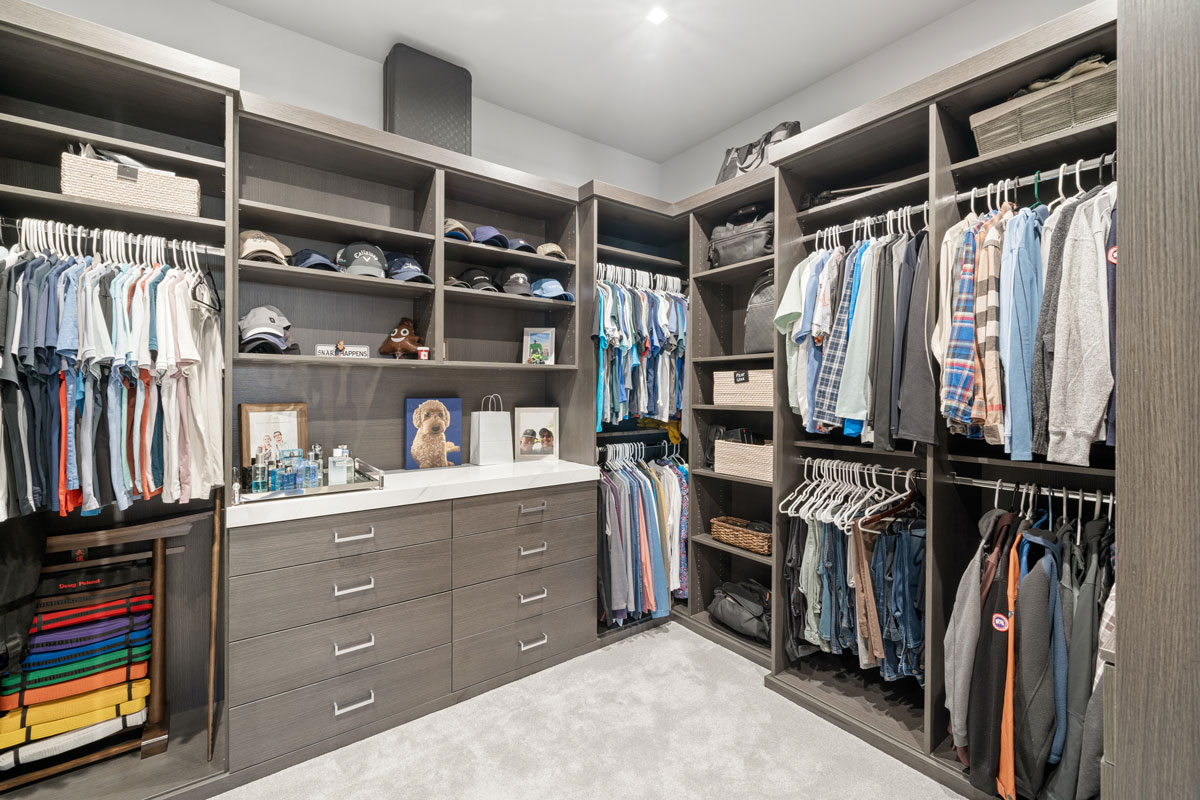
Lighting Up Your Closet: Understanding Closet Ratings for LED Luminaires
The lighting in your closet may not be the first thing that comes to mind when designing your home, but it plays a significant role in making your daily routine more efficient and enjoyable. When it comes to selective LED luminaires for your closet, understanding closet ratings is essential to ensure safety, functionality, and the right aesthetic appeal.
When it comes to designing and installing luminaires in closets and small storage spaces, the National Electrical Code (NEC) provides specific guidelines to ensure safety and functionality. Whether you’re using surface-mounted or recessed LED luminaires, it’s essential to comply with NEC requirements to prevent potential hazards and maintain an efficient lighting system. In this article, we will explore NEC 410.16 requirements for closets and small storage spaces.
Why Do Closets and Storage Spaces Need Special Lighting Considerations?
Closets and small storage spaces are often overlooked when it comes to electrical installations. However, providing proper lighting in these areas is essential for various reasons:
- Safety – insufficient lighting can lead to accidents, as occupants may struggle to find items or navigate within the space. Inadequate lighting can also create trip hazards and increase the risk of fires.
- Accessibility – A well-lit closet or storage space makes it easier to find and access stored items, preventing frustration and damage to belongings.
- Code Compliance– the NEC guidelines are designed to ensure that luminaires used in these spaces are safe, given the potential for proximity to combustible materials. Many building codes and regulations have specific requirements for closet lighting. Compliance with these codes is essential to ensure the safety and habitability of a building.
NEC Requirements for Closet and Small Storage Space Lighting
Luminaire Type: The NEC code permits surface-mounted or recessed incandescent or LED luminaires with completely enclosed light sources in clothes closets.
Usable Storage Space: The NEC code defines the usable space within clothes closets to be used for storage as follows:
The clothes closet storage space shall be the volume bounded by the sides and back closet walls and planes extending from the closet floor vertically to a height of 1.8m (6 ft) or to the highest clothes-hanging rod and parallel to the walls at a horizontal distance of 600mm (24 in.) from the sides and back of the closet walls, respectively. The volume extends vertically to the closet ceiling parallel to the walls at a horizontal distance of 300mm (12 in.) or the width of the shelf, whichever is greater. For a closet that permits access to both sides of a hanging rod, the clothes closet storage space includes the volume below the highest rod extending 300mm (12 in.) on either side of the rod on a plane horizontal to the floor extending the entire length of the rod.

Luminaire Location: Per NEC 410.16, minimum clearances between the luminaires installed in clothes closets and the nearest point of a clothes closet storage space is as follows:
- 300mm (12 in.) for surface-mounted incandescent or LED luminaires with a completely enclosed light source installed on the wall above the door or on the ceiling.
- 150mm (6 in.) for recessed incandescent or LED luminaires with a completely enclosed light source installed in the wall or ceiling.
Bulb types: When selecting LED bulbs, make sure they are the correct type and wattage for the fixture. LED bulbs are more energy-efficient and generate less heat than incandescent bulbs, which can help reduce fire risks.
Wiring: Wiring methods must comply with NEC requirements. This includes using approved wiring materials and methods to prevent overheating and fire hazards. Wiring should also be enclosed in a raceway or protected by a barrier.
Accessible Switches: Closets and storage spaces should be equipped with an accessible switch located near the entrance for ease of use. This ensures that occupants can turn the light on or off safely.
Luminaire Labeling: luminaires designed for use in closets should be labeled accordingly, indicating their suitability for this purpose. This makes it easier for electricians and inspectors to identify compliant luminaries.
Combustible Materials: Closets and small storage spaces often contain combustible materials, such as clothing, linens, and paper. Luminaires installed in these spaces must be rated to avoid igniting such materials. LED luminaires are an excellent choice due to their lower heat generation.
Proper lighting in closets and small storage spaces is more than just a matter of convenience; it is a critical safety concern. The NEC provides clear guidelines to ensure that luminaires used in these areas meet safety standards and minimize potential hazards. When considering lighting for closets and small storage spaces, remember to choose suitable surface-mounted or recessed LED luminaires and follow the NEC requirements to maintain a safe and functional lighting system. By adhering to these guidelines, you can create a well-lit and secure environment for all occupants. By understanding the specific requirements for closet lighting, you can choose the right LED luminaires that enhance your daily routine and help you safely keep your belongings organized.
What are Airtight Ratings?
Sealing the Deal: Understanding Airtight Ratings for LED Luminaires
In the world of LED luminaires, efficiency, longevity, and safety are paramount. While we often focus on lumen output, color temperature, and design aesthetics, there is a critical element that is equally as important: airtight ratings. An airtight LED luminaire is designed to prevent the infiltration of air into the building envelope. Understanding airtight ratings is essential for maintaining indoor air quality, enhancing energy efficiency, and ensuring the longevity of your lighting and HVAC systems.
What is an Airtight Rating?
An airtight rating for LED luminaires refers to the luminaire’s ability to create a barrier that prevents air, moisture, and other contaminants from passing through gaps or openings in the luminaire. An LED luminaire may be described as “airtight” once it successfully passes certification under the ASTM E283 standard. The primary objective of airtight luminaires is to prevent the exchange of air between spaces. If you are looking at a flat ceiling, there is no space for air to pass through between the room and ceiling. If you are looking to install lights to the ceiling, you will need to make a hole to install your new light. Doing so creates a passage for air to pass between the room and ceiling. Thus, having an air-tight luminaire will greatly reduce and/or eliminate the leakage of air from the room to the ceiling, and vice versa.
Choosing to utilize an airtight-rated luminaire may result in some key aspects and benefits:
- Energy Efficiency: Airtight luminaires minimize air leakage; in traditional non-airtight luminaires, openings and gaps around the luminaire or improper sealing can allow conditioned air, whether heated or cooled, to escape into uncontrolled spaces, such as attics or ceilings. Allowing conditioned air to leak into uncontrolled spaces results in energy loss and increased heating or cooling costs.
- Building Envelope Integrity: Airtight luminaires can aid in maintaining the integrity of the building envelope, which is the barrier that separates the interior conditioned spaces from the exterior environment.
- Improved Indoor Air Quality: Airtight luminaires can help reduce and prevent the infiltration of outdoor air pollutants, allergens, and even loose insulation into indoor spaces, which can contribute to better indoor air quality.
- Compliance with Building Codes: Many building codes and energy efficiency standards require airtight LED luminaires to meet specific airtightness criteria. Non-compliance can result in penalties and project delays.
Certain AirTight products may also be Chicago Plenum rated. These products are still certified as AirTight per the ASTM E283 standard, but also meet additional requirements outlined in the City of Chicago Electrical Code. These luminaires and housings have additional materials, including rated sealants, tapes, and gaskets, which help to further reduce the passage of air from the living space and the plenum space.
In conclusion, airtight LED luminaires are more than just a technical detail; they are a crucial component of an energy-efficient, healthy, and durable building. By selecting airtight-rated luminaires, you can contribute to energy savings, indoor air quality, and the overall performance of both your lighting system and your HVAC system. When it comes to illuminating spaces, sealing the deal with airtight luminaires is a decision that benefits both the environment and your bottom line.
Click this link to view all of Nora’s Air-Tight rated products
What is the difference between Wall Washing, Wall Grazing, and Wall Scalloping?

Wall washing, grazing, and scalloping are three distinct lighting techniques used to enhance the visual appearance of architectural features and create a specific atmosphere. Wall washing involves illuminating a wall uniformly from top to bottom, casting even light that emphasizes the entire wall surface, minimizing shadows, and creating a consistent, clean appearance. Wall grazing, on the other hand, involves placing luminaires much closer to the wall surface to create dramatic highlights and shadows that accentuate the textures and details of the wall surface. Wall scalloping is a method where luminaires are aimed at an angle to create an undulating or scalloped pattern of light and shadow on the wall, which serves to add depth and dimension, often for decorative purposes.
What are Wet, Damp, Indoor, and Outdoor Ratings?

Wet and damp location ratings for LED luminaires indicate their suitability for installation in environments where they may be exposed to moisture or humidity.
A “damp location” rated luminaire can be used in areas with elevated humidity levels but not directly exposed to water, such as above a bathroom vanity.
A “wet location” rating means the luminaire can safely be used in areas where it may come into direct contact with water, such as outdoor areas exposed to rain or indoor spaces such as showers. Nora’s wet location luminaires are tested to be suitable for use in indoor wet location and outdoor covered-ceiling environments where it’s constructed to prevent accumulation of water to electrical components not identified for use in contact with water.

An indoor-rated luminaire is designed for use in controlled, dry, and sheltered indoor spaces like homes, offices, and commercial buildings. They are not equipped to withstand exposure to elevated moisture, extreme temperatures, physical impacts, or significant UV exposure. In contrast, outdoor-rated luminaires are built to endure the rigors of the outdoors, with features that protect against water, dust, and temperature variations. In addition, these luminaires are typically constructed with more durable and UV-resistant materials to avoid physical and UV degradation over time.
What is CRI?
Shedding Light on CRI: The Key to Understanding LED Luminaires
When it comes to lighting any space, LED technology has brought about a revolution in terms of efficiency, versatility, and durability. However, not all LEDs are created equal, and understanding the Color Rendering Index (CRI) is essential to ensure that you achieve the right quality of light for your specific needs.
What is CRI?
The Color Rendering Index, or CRI, is a measure of how accurately a light source renders colors when compared to a reference light source, typically daylight or incandescent light. It is a numerical scale that quantifies the ability of a light source to reveal the true colors of objects, textures, and surfaces under its illumination. The CRI scale ranges from 0 to 100, with a higher CRI indicating better color rendering, and a lower CRI indicating poorer color rendering capabilities.
Incandescent and halogen lamps utilize glowing filament as the light source, which have a CRI value of 100, but these fixtures output a significant amount of heat and have relatively short lifespans.

CRI = 90

CRI = 80

CRI = 51
Why Does CRI Matter for LED Lighting Fixtures?
CRI is crucial because it directly impacts how we perceive the colors and details of the world around us when illuminated by artificial light. When choosing LED luminaires, several key reasons make understanding CRI essential:
- Color Accuracy: High CRI LEDs produce light that closely matches natural daylight or incandescent light, revealing the true colors of objects in space. This is important for spaces such as art galleries, retail stores, and design studios.
- Visual Comfort: Lighting with a high-CRI often provides better visual comfort. This means reduced eye strain and improved readability, which is especially important in workplaces, schools, and healthcare facilities.
- Aesthetic Appeal: CRI plays a significant role in enhancing the aesthetics of a space or certain objects. High CRI LEDs can make a room appear more vibrant and can make objects, whether they are a pair of shoes or fruits, look much more appealing.
- Task Performance: In areas where specific tasks are performed, good color rendering can improve efficiency and the overall quality of conducting the task.
LED luminaires offer a wide range of CRI, typically from 70 to 99 CRI, while also producing significantly less heat and having a significantly longer lifespan than incandescent or halogen lamps.
Understanding CRI Ratings
CRI ratings are generally categorized into three groups:
- 90-100: High CRI. These light sources offer excellent color rendering and are suitable for applications where color accuracy is critical.
- 80-90 CRI: Good CRI. These sources render colors well and are suitable for a wide range of applications, including residential and general commercial use.
- Below 80: Fair to Poor CRI. These light sources may not accurately represent colors and are typically not recommended for spaces where color quality is essential, or in places that humans frequent.
In conclusion, the Color Rendering Index (CRI) is a crucial factor to consider when choosing LED luminaires for your space. It directly affects how colors are perceived and can greatly influence the ambiance, functionality, and aesthetics of a room. By understanding CIR and making informed choices, you can ensure that your luminaires meet your specific needs and deliver the desired quality of light for your space.
What is CCT?
Understanding CCT (Correlated Color Temperature) for LED Luminaires
Lighting plays a crucial role in our daily lives, affecting not only our ability to see and function but also our overall comfort and well-being. The advancement of technology has ushered in the era of energy-efficient LED (Light Emitting Diode) luminaires, providing an array of options to suit various applications. One important aspect to consider when selecting LED lighting is the Correlated Color Temperature (CCT). This article will explore what CCT is and why it matters in LED luminaires.
What is CCT?
Correlated Color Temperature (CCT) is a metric used to describe the color appearance of light emitted by a light source, such as an LED luminaire. It is measured in Kelvin (K), and it indicates whether the light appears warm (yellowish) or cool (bluish). The lower the CCT value, the warmer the light, while higher CCT values represent cooler or bluer light. Understanding CCT is essential because it helps us create the right ambiance and set the appropriate mood for various environments.
CCT and Human Perception
CCT plays a vital role in how we perceive the light around us. The human eye perceives different color temperatures in a way that affects our mood, productivity, and even our circadian rhythms. Warm light with lower CCT values (e.g., 2700K to 3000K) is often associated with comfort, relaxation, and coziness. These warmer temperatures mimic the soft glow of candlelight or incandescent bulbs and are ideal for spaces like bedrooms, living rooms, and restaurants.
Conversely, cooler light with higher CCT values (e.g., 4000K to 6500K) appears more intense and is often preferred in workspaces, offices, and retail stores because it promotes alertness and productivity. Cooler temperatures mimic daylight or overcast skies and can help reduce eye strain during tasks that require focused attention.
Selecting the Right CCT
Choosing the right CCT for your LED luminaires is crucial to achieving the desired atmosphere and functionality in any space. Here are some general guidelines to consider:
- Residential Spaces:
- Bedrooms and living rooms: Warm white light with CCT between 2700K and 3000K creates a comfortable and inviting atmosphere.
- Kitchens and bathrooms: A slightly higher CCT around 3500K provides good visibility and color accuracy without feeling too clinical.
- Commercial Spaces:
- Offices and workspaces: Neutral white light with CCT between 4000K and 5000K is often preferred to enhance productivity.
- Retail stores: Cool white light can make products appear more vibrant and attractive to customers.
- Outdoor Areas:
- Pathways and security lighting: Cooler temperatures (4000K to 5000K) enhance visibility and security.
- Patios and outdoor seating: Warmer temperatures (2700K to 3000K) create a pleasant ambiance for socializing.
Consider the Purpose
When choosing the CCT for LED luminaires, always consider the purpose of the space. Do you want to create a welcoming and cozy atmosphere, or do you need bright, task-oriented lighting? It’s also important to keep in mind that personal preferences vary, so the ideal CCT may differ from one individual to another.
Conclusion
Correlated Color Temperature (CCT) is a fundamental factor to consider when selecting LED luminaires. It greatly influences the mood, functionality, and overall aesthetics of a space. By understanding the concept of CCT and its application, you can make informed decisions to ensure that your lighting choices align with the desired atmosphere and purpose of each environment, whether it’s a cozy home or a productive office. LED technology allows for a wide range of CCT options, providing you with the flexibility to create the perfect lighting experience.

Warm Color Temperature Room
2700K (Warm Color)
Warm temperatures most closely resemble a standard incandescent lamp. The warm temperature enhances reds and oranges and is considered the most comfortable light. Warm light is very popular in general or dining areas. 2700K is most flattering to skin tones. As a reference, 2700K is a typical incandescent lamp at full brightness, while 1800K is a warm candle glow. See Nora’s Comfort Dim for the best of warm temperature dimming. 2700K is available on all downlights as well as cylinders, MLS, LEDURTW, Silk, Bravo FROST and Tape lights.

Neutral Color Temperature Room
3000K – 3500K (Neutral Color)
Neutral temperatures cover the middle range of the Kelvin scale. 3000K is the most popular temperature choice in most general commercial areas and the first choice in residential applications, as warm temperatures make spaces more comfortable and people more relaxed. 3000K is comparable to the warmth of halogen sources while 3500K is a little cooler with greater enhancement of blues and greens.
3000K is available on Sapphire, Marquise, Iolite, Cobalt, Onyx and Opal Series downlights as well as LEDUR, Silk, Bravo FROST, Tape lights, Track, Rail, LED Panels, Troffers and Step Lights.
3500K is available on Sapphire and Marquise, Iolite and Cobalt downlights and LED Panels and Troffers.

Cool Color Temperature Room
4000K – 5000K (Cool Color)
Cool temperatures most closely resembles daylight and are known to illuminate objects with sharper definition. This light is ideal for offices and classrooms, where cooler temperatures make reading easier, and for jewelry stores, where the cool light helps bring out the shine in diamonds and gems.
4000K is available on Sapphire, Marquise, Iolite, Cobalt, Onyx and Opal Series downlights as well as LEDUR, Silk, Bravo FROST, Tape lights, Track, Rail, LED Panels and Troffers.
5000K is available on Iolite, Onyx and Opal families, as well as our lay-in family of lights.
